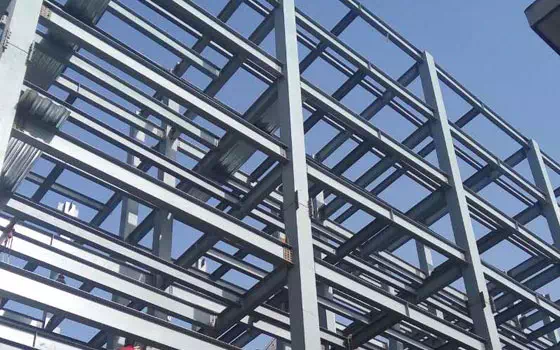Welcome to Shandong Zhishang Steel Co., Ltd.
Special-shaped steel is a kind of special shape steel, and its heat treatment technology is an important link to ensure its performance and quality. During the heat treatment process, the organizational structure and physical properties of the steel can be changed by controlling the heating and cooling methods, so as to achieve the required mechanical properties and appearance requirements.
1. For the heat treatment technology of special-shaped steel, it is usually treated by quenching and tempering. Quenching is the process of heating steel to a certain temperature and cooling it rapidly to make it obtain high hardness and strength. Tempering is the heating, insulation and cooling of steel after quenching to reduce the internal stress generated by quenching and improve toughness and machinability.
2. Martian loose iron stainless steel: This kind of stainless steel body-centered cubic structure can attract the magnet, it is cold from the Austenitic temperature, which has the best corrosion resistance, but the material is hard and brittle, and then tempered can increase the ductility, but the corrosion resistance will be reduced, especially between 450 degrees Celsius and 650 degrees Celsius tempering. It will cause the carbon atom diffusion precipitation in the crystalline lattice gap and chromium to form a network of chromium carbide resulting in the consumption of chromium elements in the adjacent area to reduce the chromium composition, can not form a protective film, and loss of corrosion resistance, so special attention is needed. The following is the heat treatment temperature of all kinds of marten loose iron stainless steel.

(1) The temperature of 403, 410, 416se is 650-750℃.
(2) The temperature of 414 is 650-730℃.
(3) The temperature of 431 is 6. (d) 440-A, 440-B, 440-C, and 420 is 680-750℃.
3. Temperature control during heat treatment is also key. Different steel types and requirements require different temperature ranges. For example, high temperature alloy steels require rapid cooling at high temperatures to maintain their high temperature strength and corrosion resistance; Mild steel, on the other hand, needs to be held for a long time at a lower temperature to evenly distribute carbon elements and reduce internal stress.
4. Granular iron stainless steel: This kind of stainless steel body-centered cubic structure (BCC) can attract magnets usually used in the automotive industry or chemical industry, the strength will not change due to heat treatment, but can increase the strength of cold processing.
5. In order to improve the corrosion resistance and oxidation resistance of special-shaped steel, specific coatings or protective agents can also be added during the heat treatment process. These coatings or protectants can form a dense protective film on the surface of the steel, preventing oxidation reactions and erosion by external media.
6. Austenite stainless steel: This kind of stainless steel face-centered cubic structure (FCC) does not work on the magnet, as described above, such materials are easy to process, so the residual stress of the material can be eliminated after processing and can be applied to different heat treatment.
7. Precipitation hardening stainless steel: This stainless steel by high temperature quenching after low temperature heat treatment, due to the material containing aluminum, or copper precipitated along the slip surface or grain boundary formation of compounds (inter-metallic compounds) and can improve its strength or hardness. Commonly used precipitation hardening stainless steel 17-4 PH, other 17-7 PH, PH15-7MO, AM-350, AM-355 and so on.
8. The deformed steel after heat treatment also needs to carry out follow-up processing and testing. According to the design requirements, machining processes such as cutting, welding, and cold bending may be required to meet the specific requirements of use. At the same time, it is also necessary to test the size, shape, hardness and other aspects of the steel after heat treatment to ensure that it meets the design requirements and use standards.
9. All kinds of stainless steel after welding heat treatment: The chromium element contained in stainless steel, after welding, in the high temperature area (heat affected zone) will often diffuse precipitation and carbon combined into chromium carbide, resulting in local chromium composition reduction, unable to form a protective film, and perforation and other corrosion often occurs in these heat affected zones, can remedy this situation often after welding, the object to heat treatment, Its role can make other areas of chromium elements spread to the lack of chromium area, in order to achieve protection.
In summary, the heat treatment technology of profiled steel includes quenching and tempering, temperature control, coating protection, and subsequent processing and testing. Through the scientific and reasonable application of these technical means, the performance and quality of special-shaped steel can be effectively improved to meet the actual needs of different engineering fields.

Zhishang steel co.Ltd,specializes in steel products,which mainly manufactures galvanized steel,galvalume steel,ppgl,ppgl and also can supply hot rolled steel, coldrolled steel,stainless,wire rod,h beam,steel pipe,etc.The company is committed to providing customers with high-quality and low-price steel products and strives tocreate value for custome···